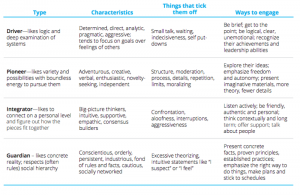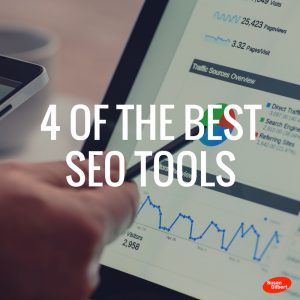Columnist Scott Rayden discusses the challenges facing agencies in a constantly-changing digital marketing landscape, explaining what agencies must do to adapt and survive.

Performance marketing agencies are dying.
No, this isn’t one of those posts like the ones we’ve been seeing for the last five or six years claiming that “SEO is dead.” Performance marketing itself is alive and well. But the old breed of performance marketing agencies – channel-based, silo-shaped, pure campaign management performance agencies – is indisputably going extinct.
The biggest fallout is being felt by independent agencies, which are either rapidly folding or being bought up. Technology is shrinking management margins to unsustainable levels. Consumers, channels, device behavior, data, and business models all look dramatically different than they did 18 months ago, and many smaller agencies don’t have the scope or resources to adjust. (Note: The author’s agency, 3Q Digital, was acquired by Harte Hanks on March 16.)
So what’s becoming of digital marketing? And will there be any independent agencies left to lead the revolution? To get to that answer, we’ll examine changes to the industry, channels, technology, data and clients, and we’ll explore how agencies need to position themselves to thrive.
The Changing Industry
Think all the way back to the beginning of 2010.
The only thing “Panda” evoked was a cute, bamboo-chewing animal. Facebook advertising was a rudimentary blip with no clout to speak of. Twitter self-serve advertising was more than a year away. Display was, to be kind, static. Retargeting was creepy. Tablets were non-existent. The “year of mobile” drumbeat had started –but to a chorus of rolled eyeballs.
Marketing technology was pretty much Marin, Kenshoo, Acquisio, Searchforce, and a mashup of display-focused companies in a rather murky ecosphere.
Today? Channels and campaigns have evolved to such an extent that the choice and composition of an agency’s marketing technology stack is as important as the chops of the marketers working within them.
Attribution technology that can expose the effectiveness and value of touchpoints across channels and across devices is considered digital marketing’s Holy Grail.
Today’s catchphrase is hitting “the right people on the right device at the right time,” and it’s no simple challenge. Many companies have adopted a mobile-first mindset, with desktop coming in second.
The Changing Channels
Even for those agencies that hang their hat on one or two channels (we’ll get to why that’s a recipe for being obsolete in a bit), the game has changed dramatically over the last few years.
SEMs got their shot across the bow in 2013 with the arrival of Enhanced Campaigns for Google AdWords, which dragged many a paid search practitioner kicking and screaming into the cross-device age. Add in the explosive emergence of PLAs (Google Shopping), and paid search has become a lot more complicated.
SEOs for whom keyword optimization and link-building were gospel have had to drastically reshape their strategies in response to wave after wave of algorithm changes. Content (fresh and useful, not keyword-stuffed) is now the name of the game, and links have become demonized to such an extent that even guest blogging is seen as potentially harmful.
To get an idea of how the perception of social advertising has changed, check out the history of Facebook’s stock price since its mid-2012 IPO:

The main driver behind that stock surge is Facebook’s ad effectiveness, including a tidal wave of mobile spend and mobile-specific ad types. Facebook’s targeting, powered by the biggest trove of data in advertising, has made huge gains in both direct-response and brand-awareness advertising and spawned copycat ad types in Twitter, which is also coming on strong in the quest for more advertising dollars.
As for display, what was viewed for years as a stodgy, creepy, fairly ineffective channel is making a comeback thanks to a wealth of data, better ways to use it, and hyper-developed retargeting strategies and technologies.
In short, even if all your agency is doing is campaign management, you need to be able to: a) prove yourself across all of these viable channels, b) tie those channels together, and c) keep a firm stance on a violently shifting landscape.
The Changing Technology
Chances are you’ve heard of Marin, Kenshoo, and Acquisio. But what about ProductsUp? How about Perfect Audience? MediaMath? Optimizely? Tableau? (Disclosure: these are all technology partners we’ve worked with.)
Have you checked out Facebook’s Marketing Partners page lately? Considered what you might need to maintain a PLA feed of 1,000 or so products? And let’s bring up that display LUMAscape again.
The bottom line is that technology is playing a much larger role within each and every marketing channel. Between bid management platforms, attribution platforms, engagement testing technologies, SEO management platforms, social platforms, DSPs, DMPs, retargeting platforms, auto-merchandising platforms for e-commerce sites… well, you get the picture.
A good digital marketing strategy has far more layers than ever before, and those layers require technology to be managed with any kind of efficiency.
The Changing Data
We’ve touched very briefly on first-party data, but there’s a lot more to that story. There’s second-party data, which you can get from strategic partnerships, and third-party data, which is pretty much infinite in scope but comes to you at a cost from data warehouses.
Notice that we haven’t even talked about the data available in places like the AdWords UI. That data exists, all right, and it’s still helpful, but it’s not even scratching the surface of what agencies can and should be using today.
The Changing Client
With all this complexity comes amazing possibility. As a result, clients are demanding more of their agencies. They want their trusted agencies to go outside of their comfort zone and provide more value with higher-level strategies that put all of these elements in play. That’s either good news or bad news depending on how willing and able the agency is to adapt and innovate.
What’s certainly bad news for agencies is that margins are shrinking quickly; with clients investing more in technology, there are fewer dollars available for the agencies leveraging that technology. This is especially true in SEM and display.
And all of this leads us to the main question facing independent performance agencies:
How Do Agencies Need To Adapt?
Bear with me, but to answer where independent performance agencies are going, let’s look at where they’ve been.
Performance agencies over the last ten years have, for the most part and with a few exceptions, remained directly focused on SEM, SEO, social, display and retargeting. They have relied on healthy margins, a limited amount of “true” competitors, limited technology and a large disparity between client sophistication and industry/agency capability sophistication.
Not all agencies fit this description, but most have historically been tactical machines – campaign management shops focused on executing the nuts and bolts of marketing better than their competitors or in-house options. Simply put, performance agencies have been campaign managers focused on their clients’ bottom line. They might think they are more, but clients see them as such, and it’s what the client thinks that matters.
Forward-thinking, independent performance agencies are showing strong moves and changes to their core business that will set them up for future success.
But many more are clinging to the hope that the next ten years will look like the past ten; they don’t want to mess with what’s been a good, profitable, percentage-of-spend model and undertake a painful organization overhaul.
The days of siloed designs without business intelligence, analytics, and mobile-specific teams are coming to a close; my estimation is that within three years, these agencies will be phased out.
So what will that leave us with?
The independent agencies built on a culture of innovation and focused diversification, creating services and structures that align with what clients will need in the future, are not just holding their ground; they’re staking new ground. They’re driving real change on the client side: the people they hire; how marketing is organized; the integration of technology, data, and analytics; new channels to integrate and more.
The layer of business intelligence these agencies add must go far beyond campaign analytics to focus on larger business opportunities; market positioning, customer profiling, website optimization, product mix, and expanded call hours are all examples of what agencies in the future can and should be able to recommend.
To achieve this, agencies must not be beholden to strictly margin-based goals. They must accommodate a culture of learning for employees, and they must enable their employees to be teachers, both internally and externally. And they must plan for the truth (and help clients plan for the truth) that new channels and technologies will emerge and may well render current core strengths obsolete.
Innovative agencies no longer picking the channels that make sense and then targeting consumers in each channel. We’re putting the audience first, learning who are they, how they behave, and what motivates them to engage. You have to know the consumer first and let the data drive the channel strategy. And always save some mindshare for the next big thing, especially if it comes from within.
Some opinions expressed in this article may be those of a guest author and not necessarily Marketing Land. Staff authors are listed here.
(Some images used under license from Shutterstock.com.)
Marketing Land – Internet Marketing News, Strategies & Tips
(206)
Report Post







